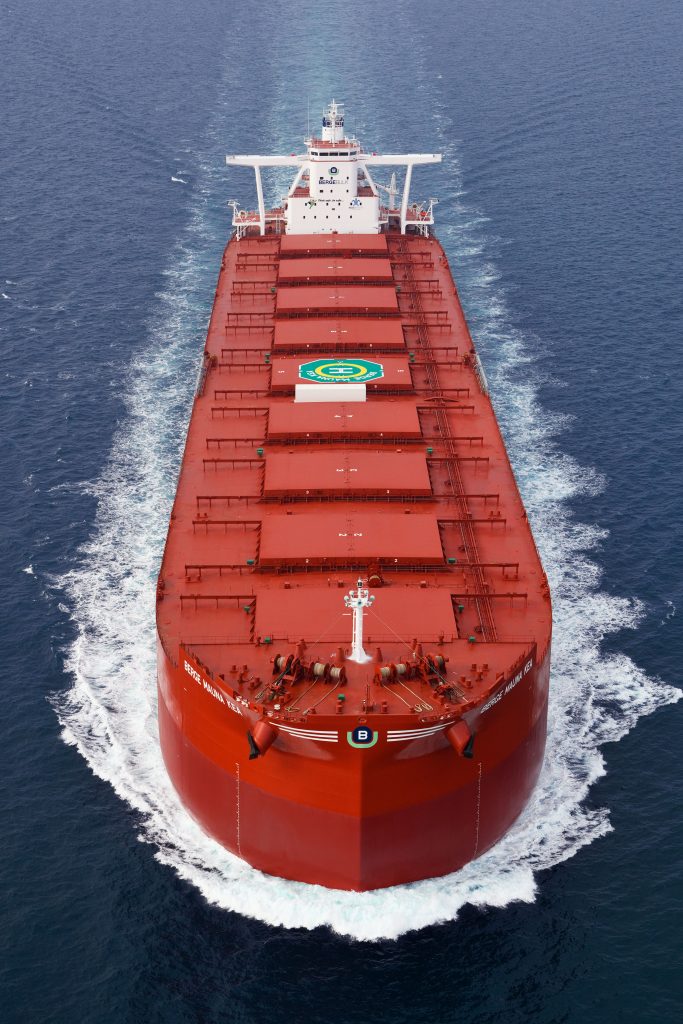The first in a series of four hyper-efficient Newcastlemax vessels
Hyper-Efficient Berge Mauna Kea joins our fleet.
The Berge Mauna Kea is a Newcastlemax vessel — stretching 300 metres long and 50 metres wide — with a carrying capacity of 211,599 DWT. It’s the first of four sister ships ordered by Berge Bulk from Imabari Shipbuilding in Japan.
The vessel is named after Mauna Kea, a long-dormant volcano in Hawaii, USA. The mountain is officially the world’s tallest from base to peak, even though more than half of it is underwater in the Pacific Ocean. It is approximately 10,205m (33,481 feet) in height, taller than Mount Everest’s 8,849m (29,032 feet).
Energy Efficient Features
The ship was designed and optimised through advanced numerical simulation and physical testing.
Key highlights of its energy efficient design:
- Upgraded hull design, tailored to optimise performance and efficiency.
- Advanced stern gear system — with a rudder bulb and a custom propeller duct to enhance propulsion efficiency.
- The main engine is based on the latest development in fuel efficiency by MAN (series 10.6) with approximately 6% lower fuel consumption compared to its predecessor. This is achieved by a new low-load tuning, combining sequential fuel injection (SEQ) and exhaust gas bypass (EGB) tuning for optimising specific fuel oil consumption (SFOC).
- The main engine’s installed power is 40% more efficient than similar vessels built in 2008.
- The vessel is compliant with EEDI (Energy Efficiency Design Index) Phase 3 in advance of IMO (International Maritime Organisation) requirements.
Our expectation, with the combination of these features, is that the yearly fuel consumption for Berge Mauna Kea will be 15% lower than other Newcastlemax vessels in our fleet.
Continuing Improvement
Berge Bulk plans to further Berge Mauna Kea’s energy efficiency by implementing a power management system; a propeller fouling prevention system; a high frequency data collection system for performance monitoring; and an advanced voyage optimisation system.

